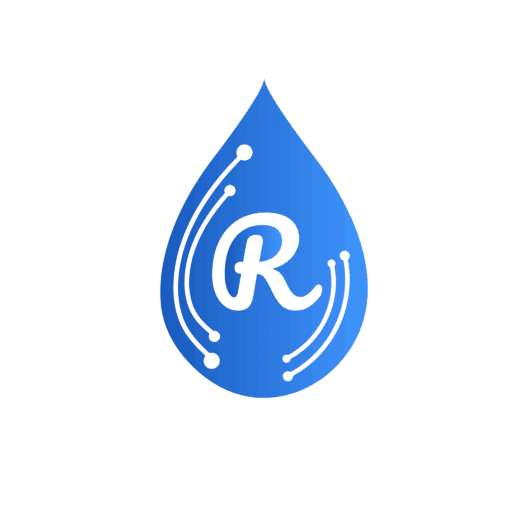
Rain Gardens
Green thumbs rejoice! The solution to some of the worst flood-related water pollution may be found in hearty native plants. Rain gardens leverage the power of plants to protect your property from erosion, runoff, and pooling. Once planted, these low-key superstars are pretty low maintenance, so (naturally) we think everyone should have one.

Rain Dog Designs, Gig Harbor, WA
Ready for a Rain Garden? Type in your address to find a local program that will pay you back for beautifying.
Low Maintenance
Filters Pollutants
Increases Property Value
Reduces Runoff
Recharge Groundwater
Improve Curb Appeal
Support Pollinators
Generous Incentives
DIY Friendly
“I had all of our neighbors come over to see our rain garden. I told them how inexpensive it was because we received $2,200 from the Bay Alliance [as an incentive package]. It was a no-brainer. It only cost us $700 for the entire project.”

General Questions About Rain Gardens
What is a Rain Garden?
Well let’s just start by saying that it’s a beautiful addition to any home, reduces your water pollution by up to 40% and can get you access to government rebates.
As rain hits impervious surfaces like your roof, patio, driveway and sidewalk, it picks up chemicals and pollutants. This water then travels onto the streets where it is contaminated further before polluting and overwhelming our local water systems or bodies of water.
Rain gardens, also called bioretention, are gardens made up of native plants built in a depression of your property intended to capture stormwater run-off. A rain garden neutralizes pollutants and allows water to soak into the ground rather than overwhelming our water systems or contribute to flooding. In fact, rain gardens are effective in removing up to 90% of nutrients and chemicals and up to 80% of sediments from stormwater runoff!
What are the benefits of a Rain Garden?
– Helps prevent flooding to your property and community
– Aesthetically pleasing and enhances property value
– Provides habitat for birds and butterflies
– Helps keep water clean by filtering stormwater runoff
– Recharges groundwater supply
What goes into building a rain garden?
At its simplest, a rain garden is a man-made depression in the ground that can fill with water diverted from the downpipe of a building, or run-off from a hard surface such as a driveway. Rain gardens work as a basin for pooling water and absorb water within a day or two.
It can be landscaped with cobbles, pebbles and gravel, which, with a surrounding rim made from the excavated soil, called a berm, can add some attractive topography to a flat site.
What kind of maintenance is required for a Rain Garden?
Rain gardens built with native plants require little maintenance. Native plants are already adapted to their environment, don’t need a lot of watering and won’t need pesticides. They are easy to establish and grow fast. Native plants have robust root systems that penetrate deep into the soil which allows for good drainage. In fact over maintaining and weeding a rain garden can do more damage then good by accidentally removing native plants that best absorb and filter your stormwater. When maintaining a rain garden you want to look to remove trash and/or any obstructions to the entrance and overflow are of your rain garden.
How does a Rain Garden Look
There are different styles and sizes but here are a few examples:
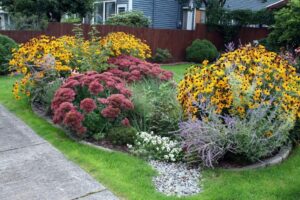
Backyard Rain Garden with Yellow Flowers
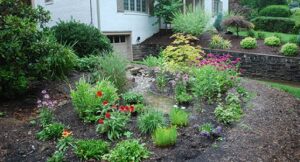
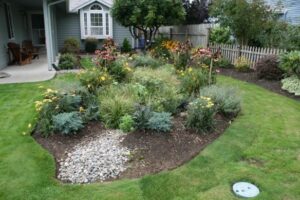
Where should a Rain Garden be placed in my yard?
Rain gardens should be strategically placed—located where water naturally flows on to your property and/or from impervious surfaces like your roof, driveway/parking area, or hardscapes. Additionally it is important that rain gardens are installed at least 10 feet from your foundation, and at the edge or outside of any tree cover to prevent from damaging tree roots.
Do Rain Gardens attract mosquitos?
Standing water attracts mosquitoes. Mosquitoes need standing water for 7-12 days to complete their life cycle. Rain gardens are designed to hold water for a maximum of 48 hours to ensure they do not become a breeding ground for mosquitoes. In fact, rain gardens should help prevent mosquitoes since they encourage water to drain back into the ground faster.
How much does a Rain Garden cost?
The cost of Rain Gardens can vary regionally. Historically rain gardens can cost anywhere from $20-40/sqft. The following variables can have the most impact to the total cost of your specific rain garden; size, local cost of labor, plant selection, and whether or not your soil conditions require additional modifications like an underdrain or soil amendments to meet adequate infiltration standards.
Are there minimum requirements in order to qualify for an Incentive?
Each incentive program is different and has its own unique standards and requirements based on the local government or region offering the incentive. Some programs will require a minimum project size of your rain garden or permeable pavers, some may require a minimum of impervious area to be treated. It varies from incentive program to incentive program.
Rainplan helps you discover what incentive programs your property is eligible for and understand the program’s specific requirements to ensure you maximize and receive your benefits!
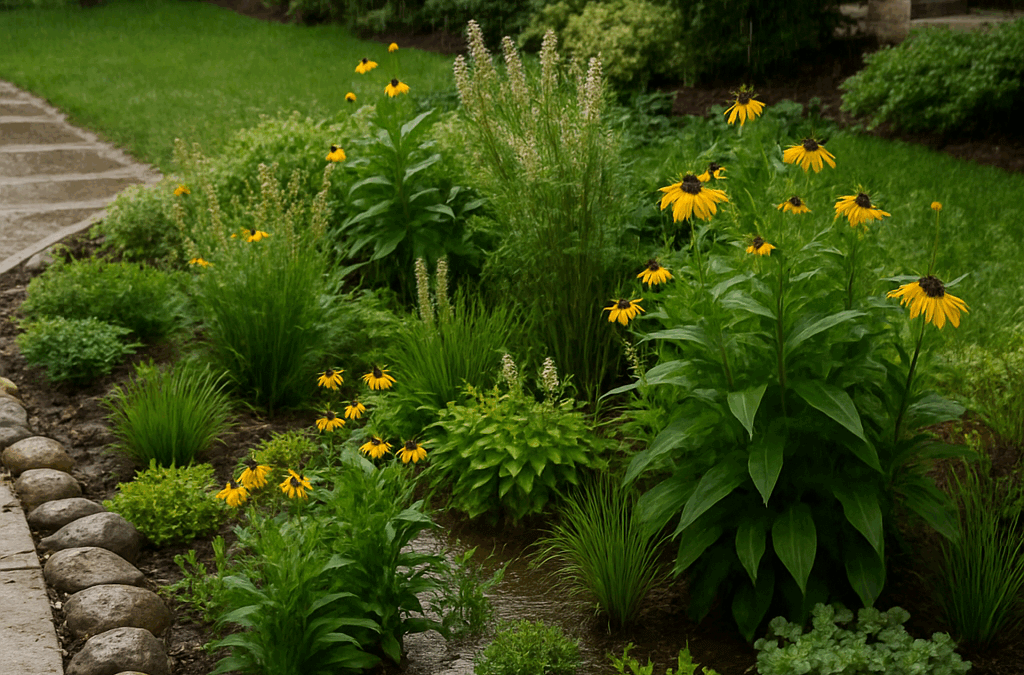
Native Landscaping: How Deep Roots and Local Plants Save Water (and Your Sanity)
Why Native Plants Are the Unsung Heroes of Eco-Friendly Yards Native plants are like that dependable friend who shows up unannounced—with tacos. They thrive in your local climate, require minimal care, and quietly make everything around them better. When it comes to...
Is a Rain Garden Right for Your Yard? Ask Your Soil (and Your Inner Landscaper)
Rain gardens are shallow, planted basins that catch roof or driveway runoff and let it soak into the ground. They reduce runoff, filter pollutants and provide habitat for butterflies and songbirds. But designing one is a bit like hosting a dinner party - get the...
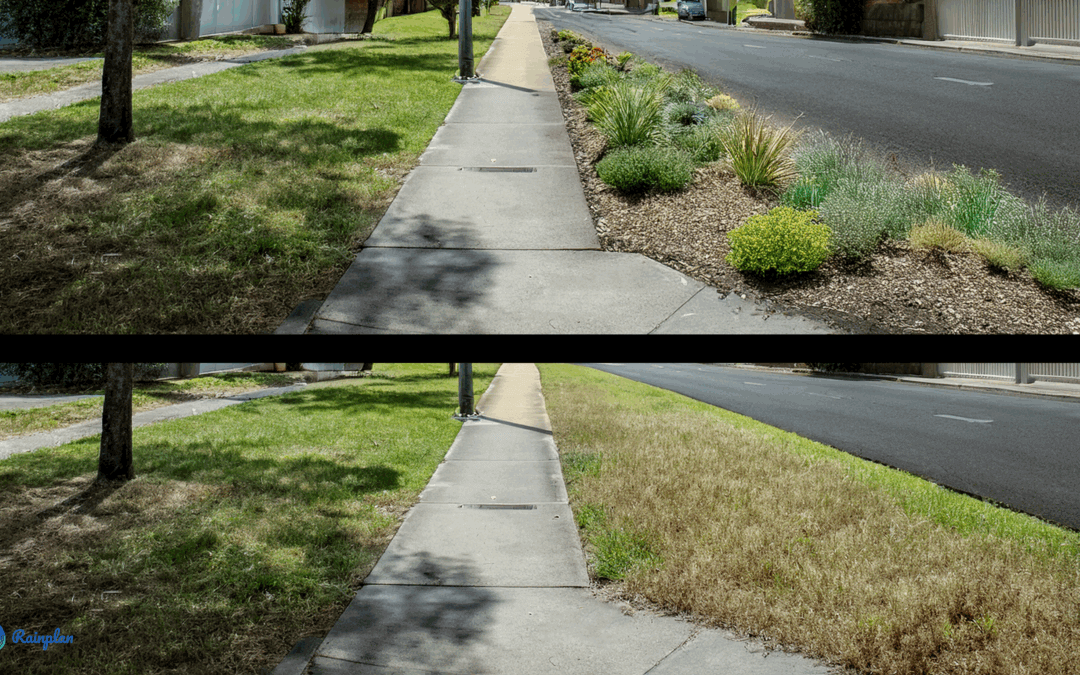
Is a Rain Garden Right for Your Yard? Ask Your Soil (and Your Inner Landscaper)
Rain Gardens: A Natural Solution for Runoff Rain gardens are shallow, planted basins that catch roof or driveway runoff and let it soak into the ground. They reduce runoff, filter pollutants and provide habitat for butterflies and songbirds. But designing one is a bit...
Why Aren’t My Permeable Pavers Draining? (…and other driveway mysteries)
Permeable Pavers: How They Work Permeable pavements are supposed to make you feel like an eco‑wizard. They let water infiltrate through the surface and into a stone bed, reducing ponding and recharging groundwater. They even reflect more heat than traditional paving...

Rain Gardens, Coast to Coast: Same Idea, Different Drama 🌧️🌵
“Oh, that? That’s Splashley Olsen. She keeps 500 gallons out of the sewer every storm.” Mic drop. TLDR: Rain gardens are shallow, planted basins that catch stormwater from roofs and driveways, let it soak into the ground, and filter out pollutants before they hit...
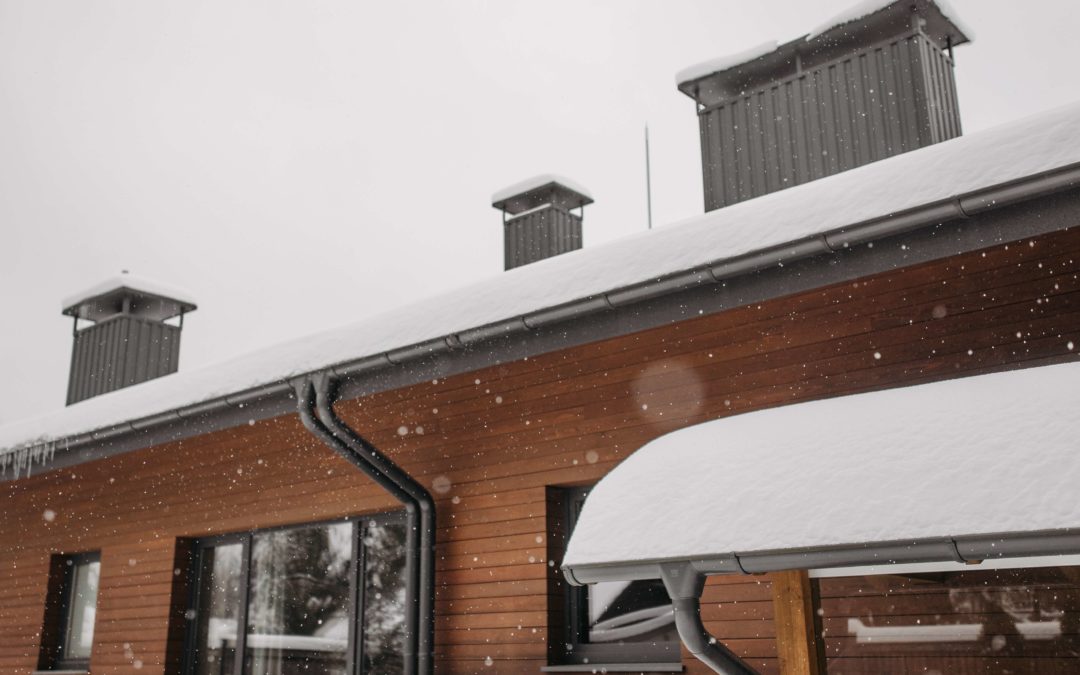
How to Winterize Green Infrastructure at Home
As the leaves change and temperatures dwindle day after day, you have probably noticed you need to begin prepping for the colder seasons. With those changes comes the time to winterize your yard for those sub-freezing temperatures and winter precipitation. You...

How to Do a Percolation Test
What is a percolation test? A percolation test often referred to as a “perc test,” determines how quickly water can move through the soil when saturated. You might already have observed the impacts of this during a heavy rainstorm! Perc tests can be done by either a...
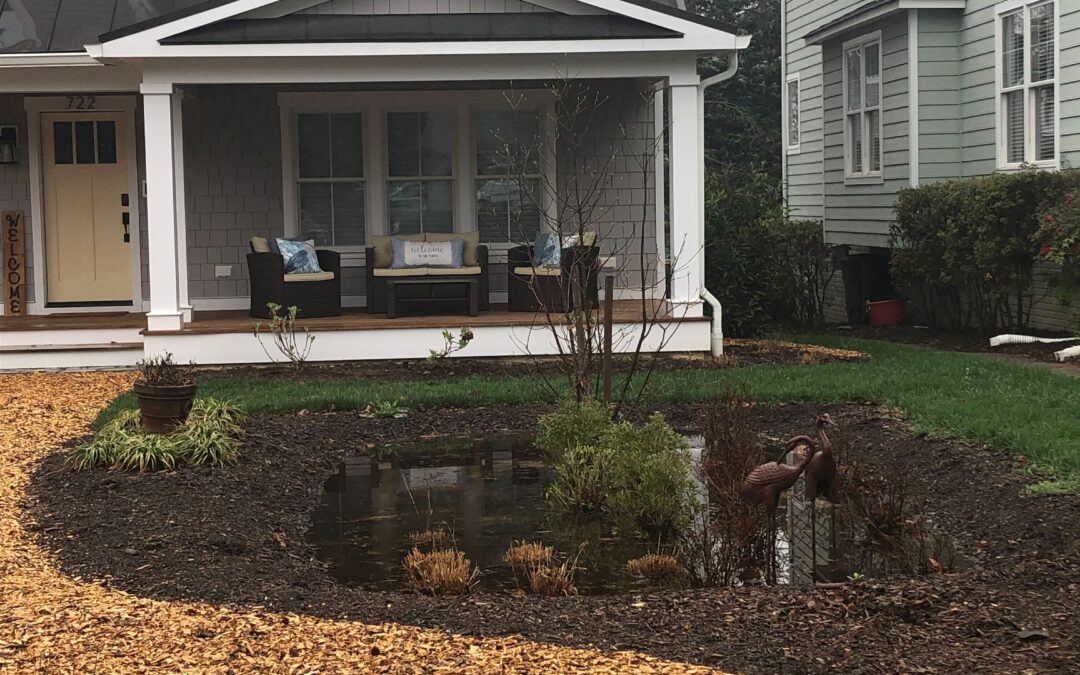
What is a Rain Garden and How does it Work?
Wondering about rain gardens? This quick post gives you insight into what a rain garden is, how it works, and the rain garden design process.
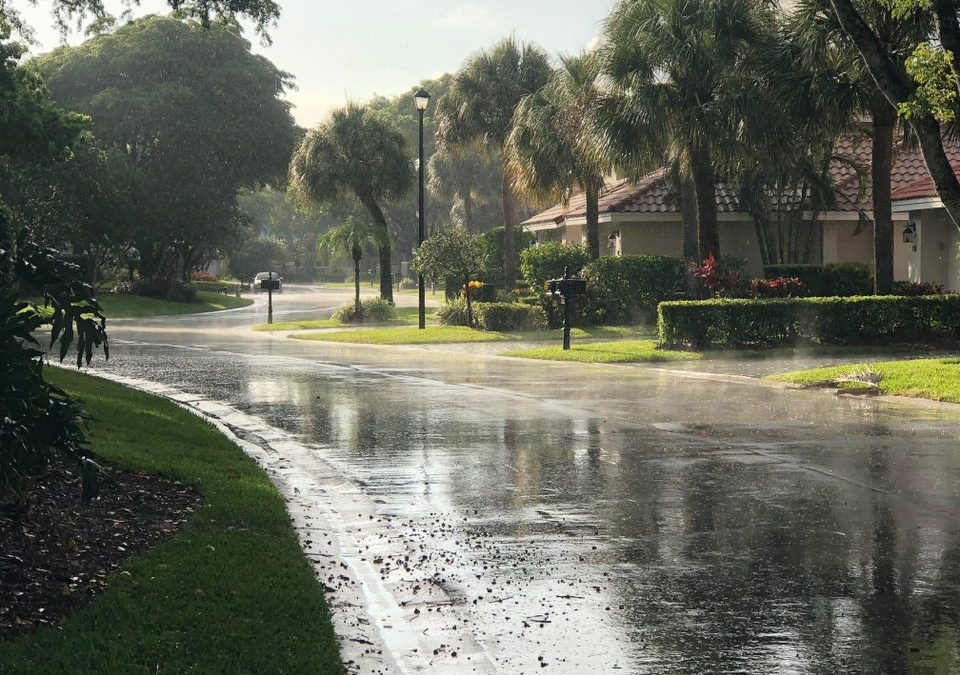
Intro to Green Infrastructure | Stormwater Systems
Wet Weather Turns into Water Runoff Stormwater runoff is the single largest cause of water pollution, flooding and property damage. According to FEMA, just one inch of rain can cause $25,000 of damage to your home. More than 22.4 million US properties are at risk of...
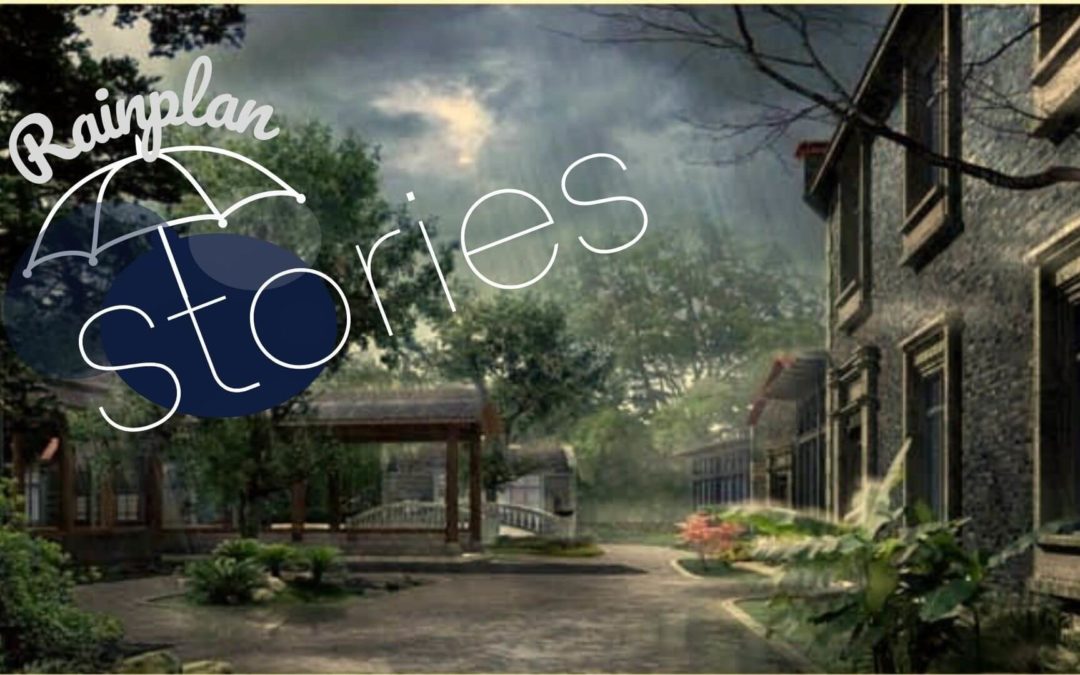
Water Runoff in Chesapeake Bay
A case study about how Washington DC homeowner Tom Bulger built a Rain Garden and leveraged incentives to address water runoff in Chesapeake Bay.
Uplifting economies & environments is our mission.
Is Rainplan a contractor?
No, we match you with the best contractors in your area and help you navigate the installation process.
What are the steps of the rainplan process?
Once you submit your address we will send you a Rainplan assessment that will include an analysis on your property, what type of technologies we recommend, the amount of government funding you’re eligible for, and a pricing estimate.
Afterwards we send a contractor or engineer to your property depending on the type of upgrade you’re looking to do. A structural engineer will evaluate the structural integrity of your property for a Green Roof, and a landscape designer will conduct a percolation test on your soil and the design for the installation on your soil for permeable pavers and rain gardens.
We’ll then send you finalized pricing and if you accept we will submit your property for incentive approval and afterwards begin the installation process.
How does Rainplan work with the government?
Yes, Rain Plan is a for-profit, private organization. We have no contractual or affiliation with the government. We provide storm water services where we assess the property, connect to installers and fund the work so there’s no out-of-pocket cost for the property owners.
We administer the application process into the local jurisdictions for the programs. For example; In DC they have numerous programs, one of them is the River Smart Rewards Program and the Chesapeake Bay Trust.
We have no affiliation but we provide a service to make it easier for property owners to make upgrades but also obtain incentives from the government. This is not only meant to be a concierge service but also a way to guarantee your incentive and not come out of pocket for the entire amount while waiting on your incentive rebate after the project is complete.
What type of technologies does Rainplan offer?
Green Roofs, Permeable Pavers, Rain Gardens, Rain Barrels
What is the homeowner responsible for?
In addition to the installation fee, the property owner is responsible for:
A- Providing Rainplan with access to the property throughout the installation process.
B- Assigning payment to Rainplan of any stormwater installation rebates.
C- Annual maintenance of stormwater improvements to ensure property owner remains eligible for annual utility fee discounts.
D- Any property damage. Stormwater upgrades are designed to capture the first 1.2 inches of rainfall and Rainplan does not guarantee protection from severe weather, and or other property related events.
